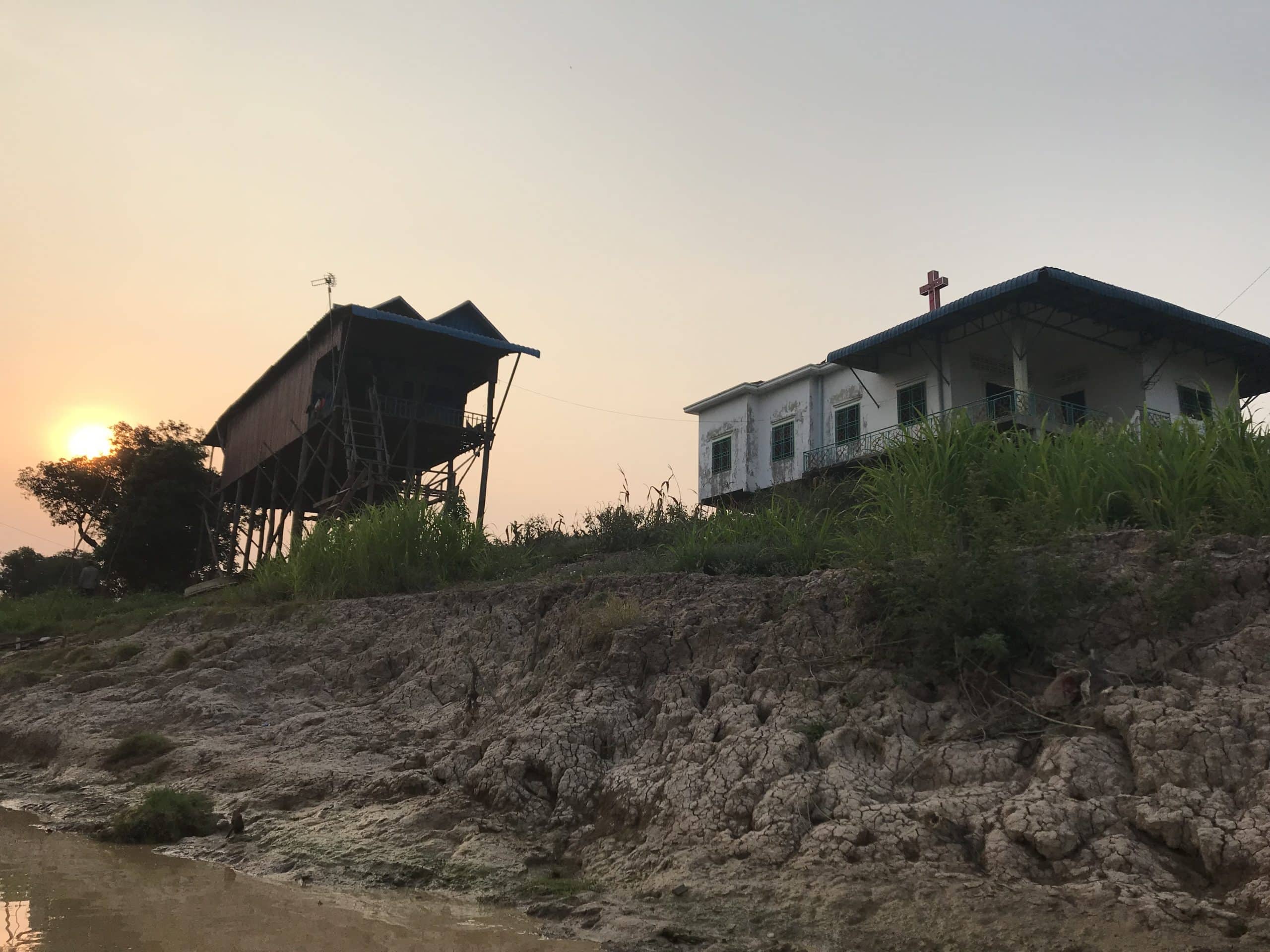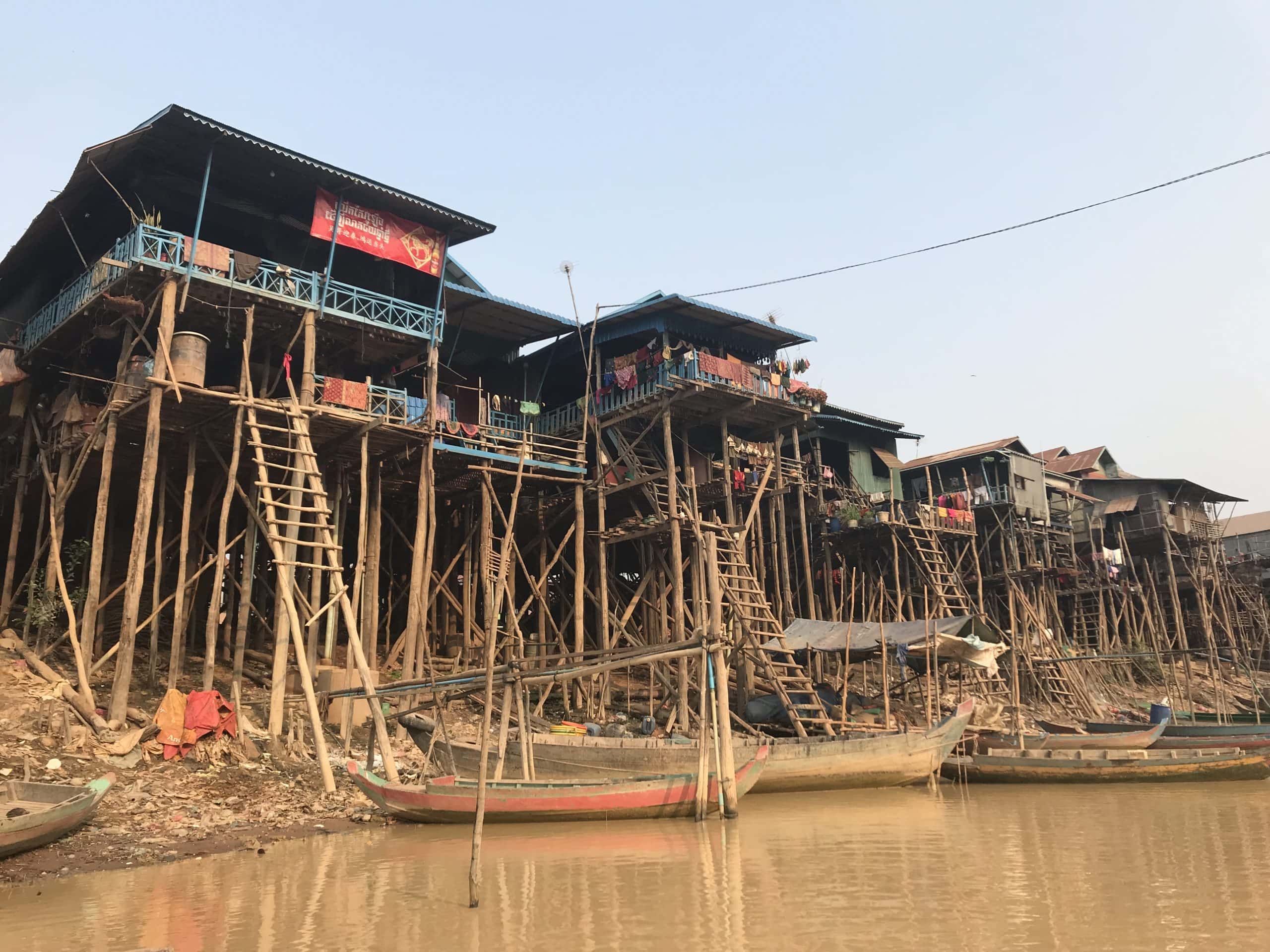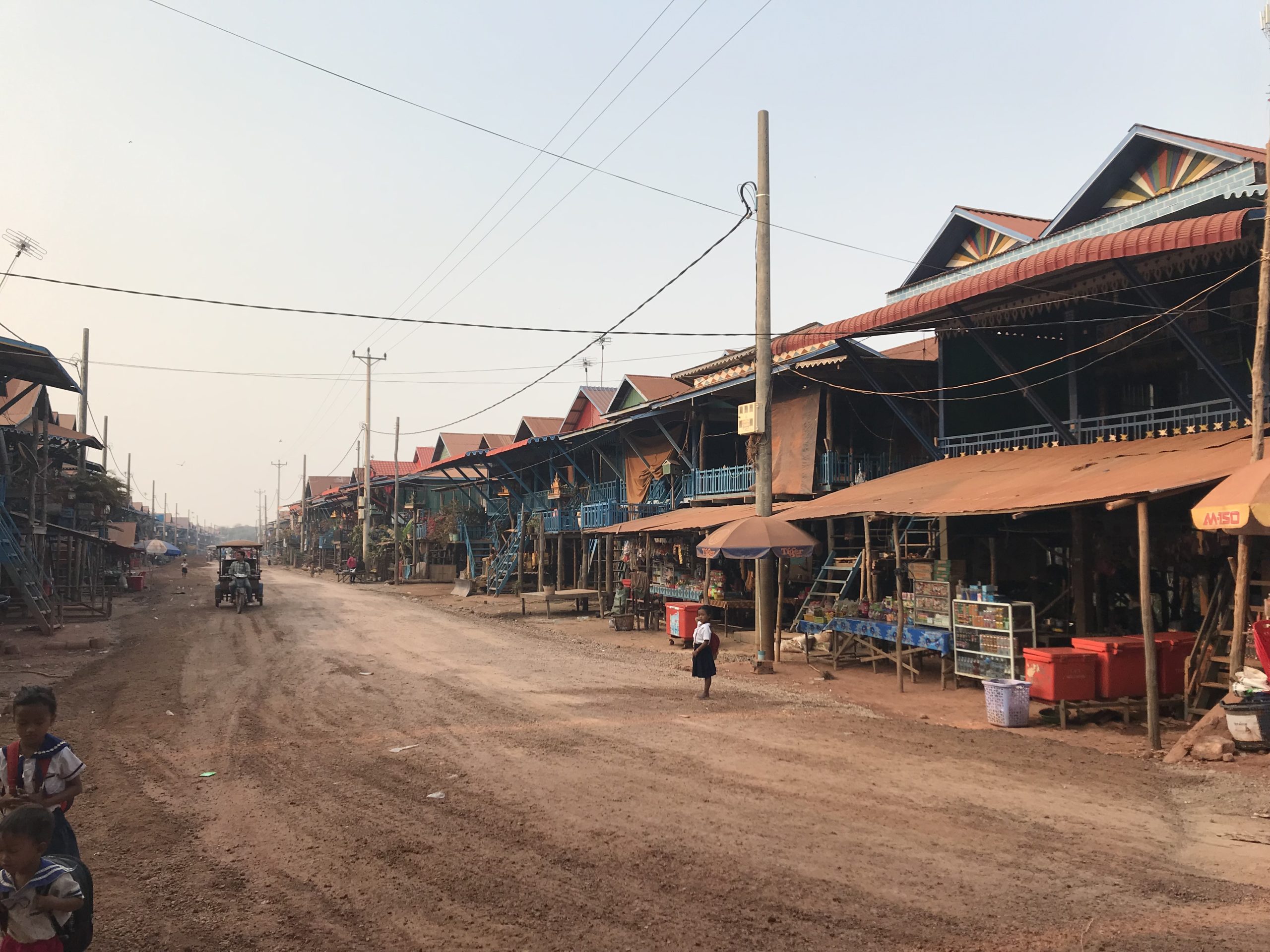
Even in the tropics, the wind is chill at this early hour. The cool air rolls in as we pick our way through the mud, trying and failing to make out shapes in the blackness ahead. Yet the closer we get to our destination, the clearer it becomes. The moon is still high, but the waters surrounding the ‘floating village’ are suspiciously low.

We had come to Tonle Sap lake in Cambodia to see one of Southeast Asia’s famous ‘floating villages’, which I had been told was at its most beautiful by sunrise. I had been seduced by ethereal photographs of colourful houses and their rippled reflection; groups of children rowing to school; a life on water, bathed in the yellow glow of dawn.
But this, as it transpired, is what appears in the wet season – and we were in the dry. As the sun began to rise, what appeared instead was a drowned world, resurfaced. The water level had dropped so low that the mechanics behind the floating villages had re-emerged, skeletal and bare; all around us towered the spindly bamboo stilts that hold these entire communities above water.
We started to paddle through the knee-high waters in our too-low boat, the houses looming above our heads. The scene felt eerily off-kilter, as though we had peeked behind the curtain before the performance, foiling the illusion. Our guide seemed to enforce this notion by showing us photographs of the ‘floating village’ in its ‘flooded’ state, telling us with great enthusiasm: “This is what you could have seen. This is what is should be like.”
After a while we disembarked, climbing a steep muddy bank to reach the elevated village centre. Two rows of high stilted homes lined a dusty path, along which children scurried to school, their classes starting just after dawn. At the village’s heart stood a bright temple, its colourful murals radiant in the morning light.

To my eyes, the impermanence of it all was everywhere. The waters were a ghost and a promise, haunting and foreshadowing every corner. The stilts were dry, but still stained dark from damp. Wheels would soon give way to oars. Families tended lovingly to gardens that would cease to exist come September.
This was not the experience I had anticipated, and yet the further we wandered, the more I came to feel that it was every bit as beautiful. It was captivating to see a community that existed in such harmony with the elements, where nature’s whims are accepted with grace and equanimity.
Lives here are conducted according to the ebb and flow of the waters and, whatever the level, it was business as usual in this ‘floating village’.

We don’t believe in standing still. Watching the world go by through a window. Hearing it through the stories of others.
You want to be in it, out there. Asking questions and finding answers. Finding yourself in worlds unknown. Finding the path less trodden. Meeting people with a different story to tell.
Just ask why, what, how, who? We’ll never stop helping you find the answers.
Our travellers come home with stories to tell, memories to keep and new ways of seeing their lives around them. That’s what happens when you truly connect with a destination.
FREE YOUR CURIOUS SIDE WITH EXPERIENCE TRAVEL GROUP


FREE YOUR CURIOUS SIDE WITH EXPERIENCE TRAVEL GROUP


